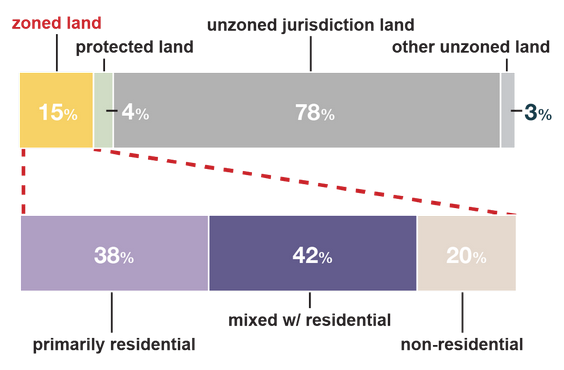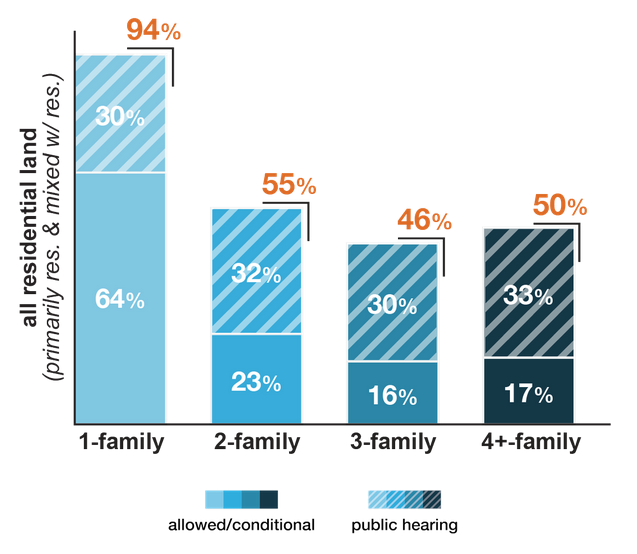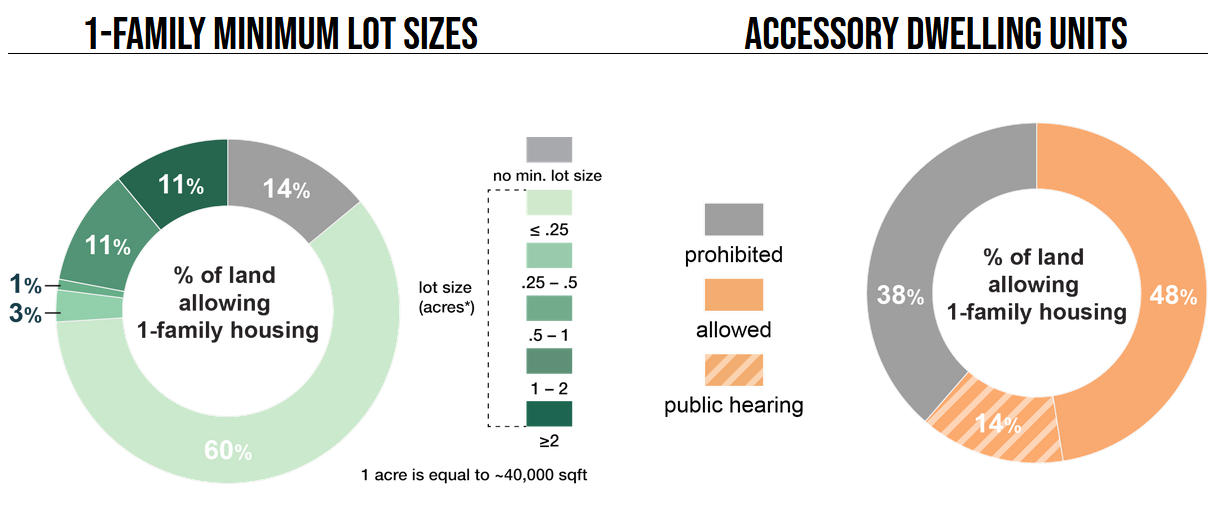Since the beginning of 2023, I have served as the Geospatial Project Coordinator for the National Zoning Atlas (NZA), a research collaborative based at Cornell University that is building the most extensive, detailed, and reliable repository of standardized zoning data in the US. So far, our group has collected, digitized, and mapped zoning information for over 5,000 jurisdictions covering over 110 million people across the country. Check it out below.
See Atlas on NZA Website
Zoning Snapshots
In addition to helping build the Atlas, I have also helped generate the NZA’s Zoning Snapshot series. These data visualizations summarize how zoning rules like allowed unit densities, minimum lot sizes, accessory dwelling unit (ADU) allowances, and minimum parking requirements break down across jurisdictions within metropolitan regions.
For example, looking at the snapshot figures for Metro Austin, Texas below, we can see that across Metro Austin’s 54 jurisdictions with zoning authority, only 15 percent of the land area is subject to zoning regulations. And within that portion, we can see that a plurality of land is designated for mixed residential and non-residential uses. Unlike most other states, in Texas, unincorporated counties do not usually have zoning power, hence the large portion of unzoned jurisdiction land here.
Land Use in Metro Austin, TX (All Land & Zoned Land)

Looking at just that zoned portion of Metro Austin’s land, the snapshots also detail density allowances in the zoning code. Here, we see that while nearly two-thirds of land zoned for residential uses allows single-family home construction by right, only 17 percent allows four-or-more-unit housing by right. As with every metropolitan area we have analyzed so far, the zoning codes in Metro Austin massively favor single-family home construction over multifamily construction.
Units Allowed in Metro Austin, TX

The snapshots also summarize minimum lot and ADU rules across the region. For land allowing single-family housing, 86 percent has some minimum lot size requirement, while only 48 percent allows ADU construction by right. These types of restrictions encourage low-density suburban sprawl, and larger minimum lot sizes make housing more expensive.
Minimum Lot Sizes and ADU Allowances in Metro Austin, TX

These figures represent just a few of the insights that the NZA’s unique dataset makes possible. I am currently working to expand the types of questions it can help answer.